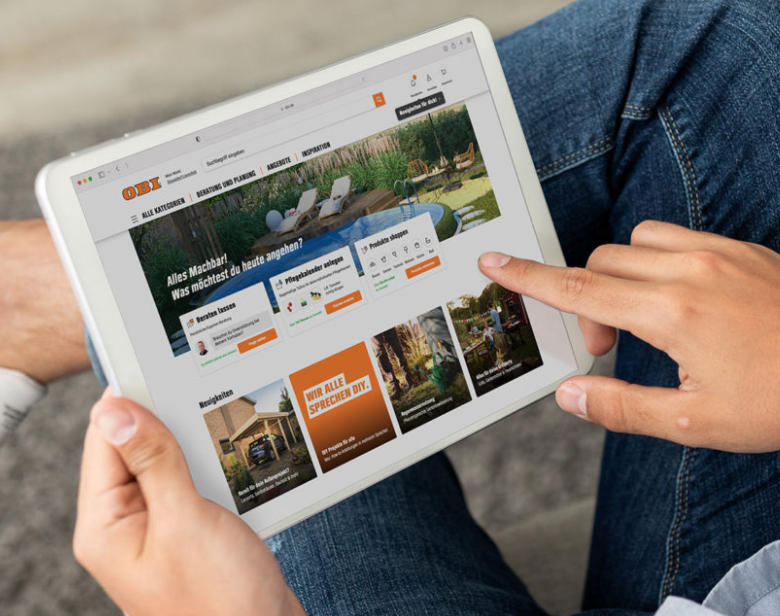With mobile gluing together the whole cross-channel play for all retailers, Paul Skeldon asks what techniques and strategies retailers can implement today around mobile to offer the kind of experience shoppers demand
1. Take a look at visual search
The other aspect of mobile-led browserless commerce lies with image recognition. Research from visual commerce AI company ViSenze, which powers image recognition at fast fashion pureplay Asos, questioned more than 1,000 UK and US Gen Z and Millennial shoppers. Nearly half of respondents shopped online at least once a week, while 60% shopped in store more than once a week. It found that more than 60% of respondents said they were most likely to complete transactions on their mobile device, and that nearly 80% tended to discover products via mobile while they were out and about. Almost two thirds (62%) said they would like to use visual search in order to find and identify products that they are inspired by on their mobile devices, before buying. And more than 70% said that if all digital content was shoppable, they would buy more online. Visual along with voice are in their infancy, but these two technologies are likely to be the next big change to hit retail – not to mention the wider internet – fundamentally shifting how people search and interact with the web. We soon could be saying goodbye to ‘https://www.’ as something anyone but the coders use.
2. Marketing through mobile
Marketing through mobile has been touched on already, but it is clearly one of mobile’s most compelling traits: it lives in the user’s hand pretty much 24/7, so it offers an excellent means to reaching those people based on who they are, where they are and ‘when’ they are. Social media is increasingly being seen by shoppers as the place to discover goods, services and ideas, yet according to research by Visualsoft, almost a fifth of leading UK e-retailers are missing out on potential sales due to a lack of connection with their customers’ extended social circles. Managing digital marketing is becoming increasingly vital for many retailers, because so many of their customers are discovering on mobile and social. Asos, for example, blamed lacklustre growth figures for Q4 2018 squarely on not doing enough around mobile SEO and social media marketing. It claims that a self-imposed slowing of mobile performance marketing affected organic growth and discovery and that getting mobile and mobile social marketing levels back up is crucial to performance. A mobile-first strategy and mobile-optimised website will all aid SEO, but these days retailers have to actively manage a mobile and mobile social marketing strategy to control and grow users.
3. Try before you buy
Mobile is increasingly being used as a tool to overlay the virtual world onto the real world, allowing shoppers to try before they buy online. The combination of augmented reality (AR) and virtual reality (VR) running on smartphones is known as mixed reality (MR) and allows shoppers to place goods virtually in their homes before buying them. This has proved particularly effective for homewares and big ticket electricals, such as AO.com which sees it as the ideal way to ‘fit’ goods in the home before purchasing them them. Starting with TVs, AO.com’s app will allow shoppers to virtually place TVs in their rooms with the exact dimensions to see exactly what it will look like. DFS is showing customers how furniture would look in their homes. And it chimes with consumers, with a study by Zappar suggesting that 33% of consumers think MR would help them narrow down choices when purchasing – rising to 74% among those that have used AR and MR already – and with 55% also wanting products in stores to have other layers of digital information ‘attached’ to them.
4. Digitally accompanied shopping experiences
The move to mixed reality services around retail is part of a general move towards shoppers wanting a digitally enhanced and accompanied experience when shopping in-store – and the mobile is the device that links the two worlds. According to research by Navigating Modern Retail, some 60% of UK consumers saying they use their smartphone, tablet or a store’s device while shopping – a number that rises to 80% for generation X and Z. As well as using mobile and tablets in store, a further 15% of surveyed UK shoppers choose to accompany this experience with digital signage, kiosks and interactive screens, finds the research. Self-checkout, as we shall come to in a moment, is very popular with 30%, but many others use the mobile in-store for research and social sharing, while many others are looking to receive offers and coupons, marketing information and to find out more about products while browsing.
This is an extract from a longer piece that first appeared in the IRUK Top500 Mobile & Cross-channel Performance Dimension Report 2019. Click here to explore InternetRetailing research, including the Top500 series of reports.
Image: Fotolia








